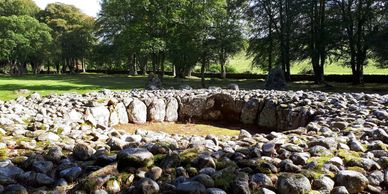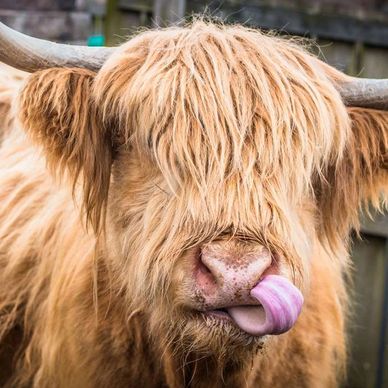New Winter Rate from Oct 1st. Bed & Breakfast including "Breakfast to go" Pack
Explore the highlands around Lycia Rooms +
Clava Cairns
Inverness Botanic Gardens
Inverness Botanic Gardens

A hugely significant and exceptionally well preserved prehistoric site, Clava Cairns is a fantastic example of the distant history of Highland Scotland, dating back about 4,000 years. The cemetery was used in two periods. At around 2000 BC a row of large cairns was built, three of which can still be seen today.
Inverness Botanic Gardens
Inverness Botanic Gardens
Inverness Botanic Gardens

With each new season the gardens are an explosion of colour and texture with borders planted to demonstrate a wide variety of plants and growing conditions. The impressive glasshouses reveal the drama of plant diversity ranging from the tropical rainforests to arid, heat scorched desert.
Dochgarroch Locks
Inverness Botanic Gardens
Dochgarroch Locks
Dochgarroch Locks, near Inverness, is part of the Caledonian Canal. It's a peaceful place where you can see boats moving through the locks. The area is great for walks and taking photos. The locks are still in use and show Scotland's history and natural beauty.
Fun fact: The Caledonian Canal, which includes Dochgarroch Locks, has a total of 28 locks that lift vessels from sea level to over 100 feet above sea level at its highest point .
Inverness
Inverness Castle
Dochgarroch Locks
Inverness is a city on Scotland’s northeast coast, where the River Ness meets the Moray Firth. It's the largest city and the cultural capital of the Scottish Highlands. Its Old Town features 19th-century Inverness Cathedral, the mostly 18th-century Old High Church and an indoor Victorian Market selling food, clothing and crafts. The contemporary Inverness Museum and Art Gallery traces local and Highland history.
Inverness Castle
Inverness Castle
Inverness Castle
.webp/:/cr=t:22.22%25,l:0%25,w:100%25,h:55.56%25/rs=w:388,h:194,cg:true)
Sitting on the banks of the River Ness at the heart of Inverness, the castle is easily the most prominent structure, towering above the city and allowing for fantastic views beyond. The castle occupies the site where the original medieval fortification once dominated the burgh of Inverness.
Urquart Castle
Inverness Castle
Inverness Castle

The magnificently situated Urquhart Castle, on the shore of Loch Ness, has seen some of the most dramatic chapters in our nation’s story.
Once one of Scotland’s largest castles, Urquhart saw great conflict during its 500 years as a medieval fortress. Control of the castle passed back and forth between the Scots and English during the Wars of Independence. The power struggles continued, as the Lords of the Isles regularly raided both castle and glen up until the 1500s.
The last of the government troops garrisoned here during the Jacobite Risings blew up the castle when they left. Urquhart’s iconic ruins remain, offering glimpses into medieval times and the lives of its noble residents.
Highland Cows
Highland Cows
Highland Cows

Highland cows, or as we Scots call them, “Heilan Coos” or “Highland Coos” are the most iconic and photographed Highland residents. Who can resist their colourful coats from Red to Yellow and lots in between, with their curly and shaggy fringes, beautiful eyes and those slightly scary but stately horns!!
We don’t think there is another Scottish animal that captures your attention as much as a Highland Coo, a true symbol of Scotland. We hope you find the time to enjoy these special animals. the can be seen throughout the Highlands. but more specifically at these two locations close to Lycia Rooms +
Dochgarroch
This is a busy wee spot as departure location for Loch Ness by Jacobite Cruises and the lovely An-talla Café and of course an important access to the Caledonian Canal there are also lovely Highland Cows in the field beside the An- Talla car park.
This popular family attraction is open April to October, as well as being a fabulous play space for children it is also home to some friendly Highland Cows, you can feed them and there is an option to book a one to one “meet and greet” a Highland cow. Plus, Farm Ness is home to other furry faves such as Alpacas. Farm Ness is a great day out.
